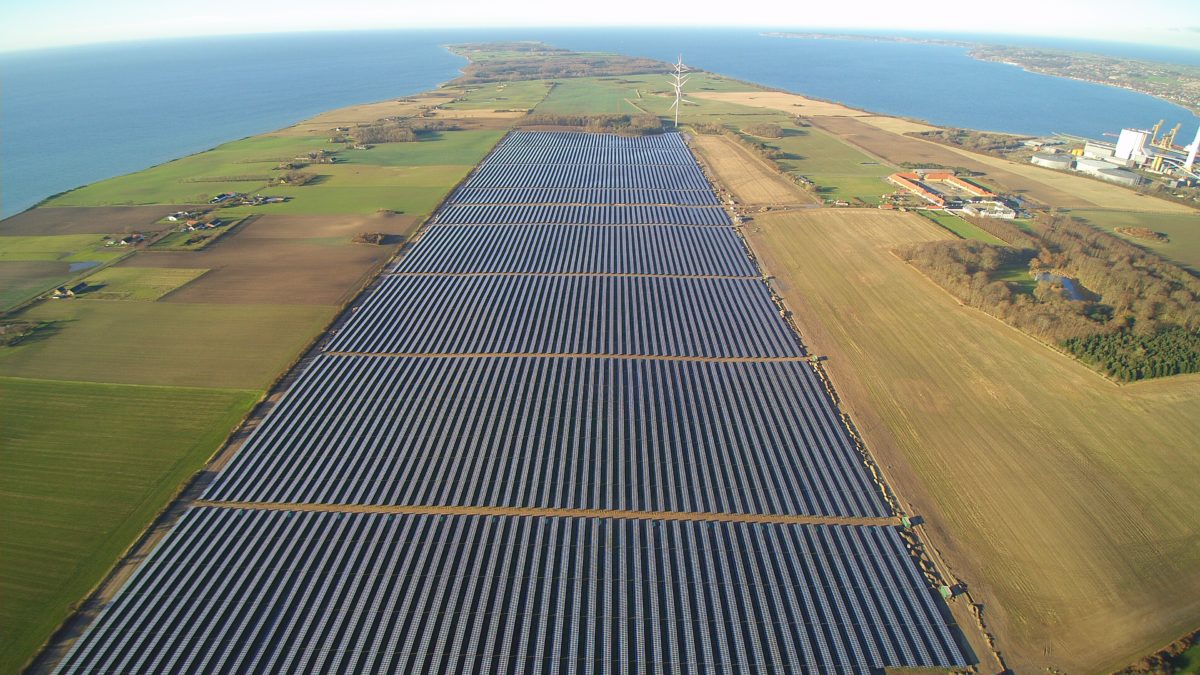Solar power in Denmark is to be given a level playing field against the more dominant wind power sector following a decision this week by the government to allow PV to compete on the same subsidy tender auctions as onshore wind.
As a world-leader in both on- and off-shore wind, Denmark has attained its lofty position via a combination of windy conditions, a vast coastline and generous subsidies for the sector.
However, under pressure from the nascent but growing solar industry and the Danish People’s Party, the government is to allow the two technologies to compete on equal terms for the next two years’ worth of subsidies.
The new measures will impose a limit on total subsidies offered to renewables between 2018 and 2019 of 1 billion Danish krona, which is $158 million.
Flemming Kristensen, chairman of the Danish Industry Association for Solar Energy, believes that the new level playing field will serve to boost installed PV capacity in the country while also increasing its competitiveness.
“We are not afraid of the competition,” Kristensen said. “But we think it should not be either solar or wind, but both solar and wind.”
Michael Vater, managing partner of Danish renewable energy firm Better Energy told pv magazine: “We welcome the government’s intentions to integrate the greatest amount of green power at the lowest cost. This gives us a clear incentive to further innovate and work even harder to improve cost-effectiveness.”
These new measures could boost the adoption of hybrid wind-solar installations in Denmark – sector currently being explored with gusto by Swedish utility Vattenfall. Wind power currently dominates Denmark’s clean energy sector, accounting for more than 70% of installed capacity, with solar at a lowly 4.2%, according to the Danish Industry Association for Solar Energy.
Vestas, the largest wind turbine manufacturer in the world, was critical of the Danish government’s proposal, namely what it sees as a low amount for subsidies for both types of commercial technology.
“We are disappointed with the low level of ambition in the agreement reached in terms of market volume,” a Vestas spokesperson told Reuters.
The Danish government’s current renewable energy subsidies are intended to be phased out completely before 2030, in line with many other leading European nations such as the U.K. and Germany.
Last year Denmark closed its ‘transitional’ incentive program for solar installations up to 400 kW in size in a move that was met with criticism in the sector. Prior to the new auction ruling, Energinet.dk estimated that Denmark’s solar PV capacity would reach a modest 2.1 GW by 2025.
Karin Tronbech Hansen of Energinet.dk told pv magazine that despite solar's levelized cost of electricity (LCOE) tumbling rapidly these past few years, onshore will will still likely hold the edge. “But it could be more difficult to secure local permissions for the placement of onshore wind than for solar – due to neighborhood objections,” Hansen said. “So onshore wind developers may have to buy up nearby houses to get local support and permissions for their sites.”
Hansen added that the new rules are only until the end of 2019, and thereafter a larger energy agreement is likely to be negotiated. “One could view this forthcoming two-year subsidy scheme as something of a trial period.”
This content is protected by copyright and may not be reused. If you want to cooperate with us and would like to reuse some of our content, please contact: editors@pv-magazine.com.



1 comment
By submitting this form you agree to pv magazine using your data for the purposes of publishing your comment.
Your personal data will only be disclosed or otherwise transmitted to third parties for the purposes of spam filtering or if this is necessary for technical maintenance of the website. Any other transfer to third parties will not take place unless this is justified on the basis of applicable data protection regulations or if pv magazine is legally obliged to do so.
You may revoke this consent at any time with effect for the future, in which case your personal data will be deleted immediately. Otherwise, your data will be deleted if pv magazine has processed your request or the purpose of data storage is fulfilled.
Further information on data privacy can be found in our Data Protection Policy.